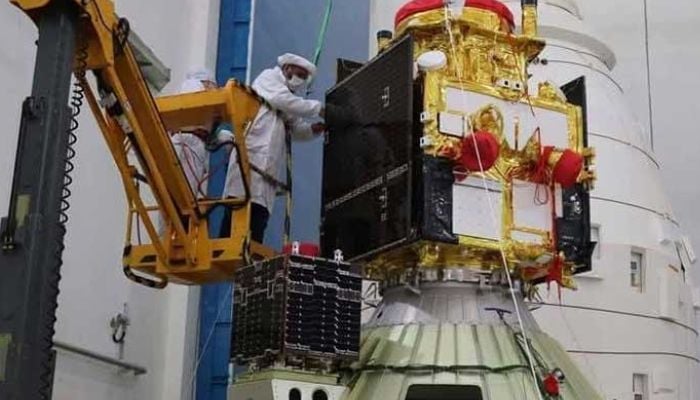
An image of Pakistan's first homegrown electro-optical (EO-1) satellite before its launching, taken on January 17, 2025. — Facebook/@SUPARCOPakistan
The Space and Upper Atmosphere Research Commission (SUPARCO) announced on Wednesday that Pakistan’s first Hyperspectral Satellite (HS-1) will be launched on October 19 from the Jiuquan Satellite Launch Centre in China.
According to SUPARCO, the launch marks a landmark achievement in Pakistan’s national space programme, opening new opportunities for agriculture, disaster management, urban development, and environmental monitoring.
Pakistan's Hyperspectral Satellite
Hyperspectral imaging is an advanced satellite technology that captures hundreds of narrow colour bands instead of just a few basic ones like red, green, and blue.
This ability provides scientists with the opportunity to detect very subtle variations in light that are invisible to the human eye or standard satellite cameras and support material identification, pollution monitoring, or environmental changes in greater detail.
According to SUPARCO, “HS-1 will play a key role in precision farming,” which will provide crop health, soil moisture, and irrigation patterns with a potential yield estimate improvement of 20%.
In addition, the high-resolution sensors on the satellite will help map infrastructure density, assess urban growth, and support sustainable city planning through land use analyses.
HS-1 will be a vital tool for disaster management, providing early warning of floods, landslides, and other geo-hazards for northern Pakistan, as well as helping with recovery and resource allocation post-disaster.
HS-1 will be added to Pakistan’s expanding remote sensing constellation — PRSS-1 (2018), EO-1 (2025) and KS-1 (2025) — as a way for Pakistan to build its space agency infrastructure.















